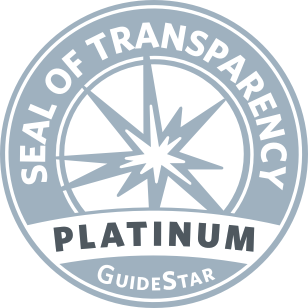Leber Congenital Amaurosis Research Advances
Research News
Recent developments in research on Leber congenital amaurosis.
OPUS GENETICS REPORTS VISION IMPROVEMENTS IN LCA5 GENE THERAPY CLINICAL TRIAL
Opus Genetics, a patient-focused gene therapy company launched by the Foundation, has merged with Ocuphire. The new company retains the Opus name and is traded on the NASDAQ exchange with the symbol “IRD.”Opus reported vision improvements patients in its Phase 1/2 gene therapy clinical trial underway at the University of Pennsylvania for people with LCA5. Some of the patients, who had been almost totally blind since birth, can now see and identify objects for the first time. The company plans to enroll pediatric patients in the trial during the first quarter of 2025. LCA5 is one of the most severe forms of LCA.
SEPUL BIO ADVANCES LCA10 AND USH2A RNA (ANTISENSE OLIGONUCLEOTIDE) THERAPIES INTO CLINICAL TRIALS
Théa has launched a new business unit, Sepul Bio, to continue clinical development of two RNA therapies: sepofarsen for people with LCA10 caused by the IVS26 mutation in the CEP290 gene and ultevursen for people with exon 13 mutations in the USH2A gene. Both therapies, originally developed by ProQR, had shown efficacy in earlier clinical trials. Sepul Bio has dosed the first patients in its LUNA Phase 2b clinical trial for ultevursen and its Phase 3 HYPERION for sepofarsen.
LCA4 GENE THERAPY RESTORES MEANINGFUL VISION FOR BLIND CHILDREN
MeiraGTx, a genetic medicines company in New York and London, has reported significant vision improvements for 11 children, between the ages of one and four, who received a gene therapy for Leber congenital amaurosis 4 (LCA4), a severe retinal condition caused by mutations in the gene AIPL1. Results for four children in a clinical trial at Great Ormond Street Hospital in London were reported in the journal Lancet. Prof. Michel Michaelides from Moorfield’s Eye Hospital and University College London was lead investigator for the clinical trial and lead author on the Lancet paper. MeiraGTx hopes to apply for marketing approval in the UK for its LCA4 gene therapy.
GENE THERAPY FOR LCA1 (GUCY2D) IMPROVES VISION IN CLINICAL TRIAL, PHASE 3 TRIAL PLANNED
Atsena has licensed its LCA1 (GUCY2D) gene therapy to Nippon Shinyaku for potential marketing in the US and EU. A Phase 3 clinical trial is planned. In the Phase 1/2 clinical trial for the LCA1 gene therapy, the nine patients receiving the highest dose had improvements in retinal sensitivity and their ability to navigate a low-luminance mobility course. The treatment was developed by Shannon Boye, PhD, at the University of Florida, and an Atsena co-founder.
GENE THERAPY FOR LCA6 (RPGRIP1 MUTATIONS)
Odylia is developing a gene therapy based on an adeno-associated virus for LCA caused by RPGRIP1 mutations. Future plans include generating a clinical-grade gene-therapy vector for toxicology studies, and ultimately, a clinical trial. Dr. Eric Pierce’s clinic at Mass Eye and Ear has also identified seven families with RPGRIP1 mutations. An earlier study showed that gene therapy rescued degenerating rods and cones in a mouse model of the condition.
FDA APPROVES SPARK’S VISION-RESTORING GENE THERAPY
Spark Therapeutics’ vision-restoring RPE65 gene therapy has received marketing approval from the U.S. Food and Drug Administration, becoming the first gene therapy to gain regulatory approval in the U.S. for the eye or any inherited condition. Known as LUXTURNA™ (voretigene neparvovec), the gene therapy restored vision in a clinical trial for people between the ages of 4 and 44 with Leber congenital amaurosis (LCA) caused by mutations in the gene RPE65. Study participants with severe vision loss reported putting away their navigational canes, seeing stars, being able to read, and recognizing faces of loved ones. Vision restoration has persisted for at least three years. The treatment is also designed to work for people with retinitis pigmentosa (RP) caused by RPE65 mutations. The Foundation invested about $10 million in more than a decade of lab research that made possible the RPE65 gene therapy clinical trial at the Children’s Hospital of Philadelphia (CHOP).
OCTOBER 2025




